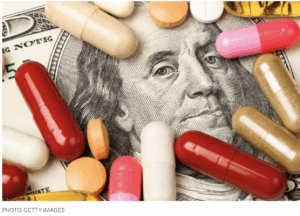
In Part I of this series, we discussed the history of the pharmaceutical industry and learned that Europe used to dominate the market. It has only been since the turn of the twenty-first century that the United States has taken over domination of the industry. Today, we will discuss how this change came about.
Sally Pipes’s new book “The World’s Medicine Chest: How America Achieved Pharmaceutical Supremacy―and How to Keep It” (2025, Encounter Books), examines the policies and economic forces that helped the United States overtake Europe as the global leader in drug innovation.
Jonathan Miltimore, writing in The Epoch Times, explains what happened. He says, “It’s no mystery why this happened. As Charlie Munger famously said, “Show me the incentive, and I’ll show you the outcome.”
The quote highlights a point that Pipes understands well. She argues that the decline of Europe’s pharmaceutical industry was “a direct and predictable result” of price control schemes.
Companies are far less likely to spend billions on R&D if they aren’t allowed to charge enough to recover their investment and fund future breakthroughs. With the average R&D cost of new drugs hovering at about $2 billion, even modest limits on expected returns can tip the risk-reward balance and deter investment in promising but uncertain therapies. (Pipes, citing journalist Matthew Herper, notes that the median cost is closer to $6 billion.)
While “obscene” pharmaceutical profits dominate today’s headlines, Pipes points out that 90 percent of all U.S. prescriptions are for generic drugs—the highest percentage in the world. Meanwhile, strong patent protection and flexible pricing have fueled innovation, leading to a steady pipeline of new treatments and medical breakthroughs. This framework, as Pipes describes it, is a “collaboration between public and private entities,” which preserves financial incentives for pharmaceutical companies while harnessing the strengths of both sectors to drive innovation and bring new therapies to market.
While the U.S. currently enjoys pharmaceutical hegemony, Pipes points out that the U.S. appears driven to make the same errors as Europe. The Inflation Reduction Act, passed in 2022, “green-lit price controls in the Medicare market for the first time.” In 2026, the federal government will begin setting prices on medicines for the first time. At the same time, the pharmaceutical industry is growing increasingly unpopular, and not just with Democrats hostile to corporate profits.
“Just 13 percent of Republicans supported the pharmaceutical industry in 2023, down from 45 percent in 2020,” Pipes writes.
All of this, Pipes contends, stands to destroy the pharmaceutical innovation that for generations has improved the lives of Americans (and countless people who reside in countries that freeload on America’s entrepreneurial system while capping prices at home).
Pipes rightly warns that federal price controls would be a disaster. Undermining the incentive structure that has produced so many life-saving drugs would be a grave mistake. But it’s worth asking whether such a path becomes inevitable once the federal government moves beyond its constitutional role of protecting individual rights and becomes a primary funder of medical research and a dominant purchaser of treatments.
That was Europe’s trajectory—something that Pipes makes clear—and it’s hard to see how the United States avoids a similar outcome without deeper structural reforms than the ones proposed in this book. The real question is which is more important; cheaper drugs or more innovative drugs that treat diseases today that were untreatable yesterday?



